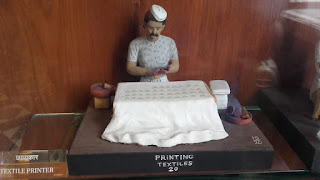Earlier this month was the Kala Ghoda Arts Festival: a celebration of music, dance, drama, literature, visual arts and more art forms across different locations in South Mumbai.
The immediate comparison, in my mind, was to Chennai's Mylapore Festival, and they sure do share a sense of local excitement and spirit. However, the KGAF is more modern in flavour and attracts a slightly different kind of crowd.
The main draw was the street connecting the Kala Ghoda statue and Lion Gate, which was filled with art installations and stalls of various kinds. The installations ranged from photographs celebrating the city, to representations of classic childhood toys, to representations of houses. Many incorporated ways to interact with it using technology, such as QR codes with facts and special points to take selfies. The stalls sold mostly clothing, jewellery, art and decorative items. Of course there were food stalls as well, and one thing I was glad to see (and use) was seats in a gallery along one side of the street.
I also managed to catch a few events: one was a high-production-value Hindi adaptation of The Tempest, in Horniman Circle garden. It was an interesting watch! For starters, Prospero and Alonso were women. One suddenly thinks of the play differently when thinking of it as a mother and daughter who had to leave their home and build a life on the island. Ariel was two spirits, with a playful and agile dynamic. Caliban was foreign and frightening, and drew the most applause. Also, Ferdinand was very jacked.
Of course, the medium made all the difference: the characters feel more relatable speaking in a conversational, local language. Unfortunately they didn't use this to explore possible themes (colonialism, gender) any deeper than the text.
Also, here is an unabashed plug of Mumbai Maths Circle. It is aimed at school/college students and maths teachers who would like to discuss puzzles and interesting mathematical ideas, with no thoughts of exams. Take it from me, even if I'm biased - maths is great fun!






















